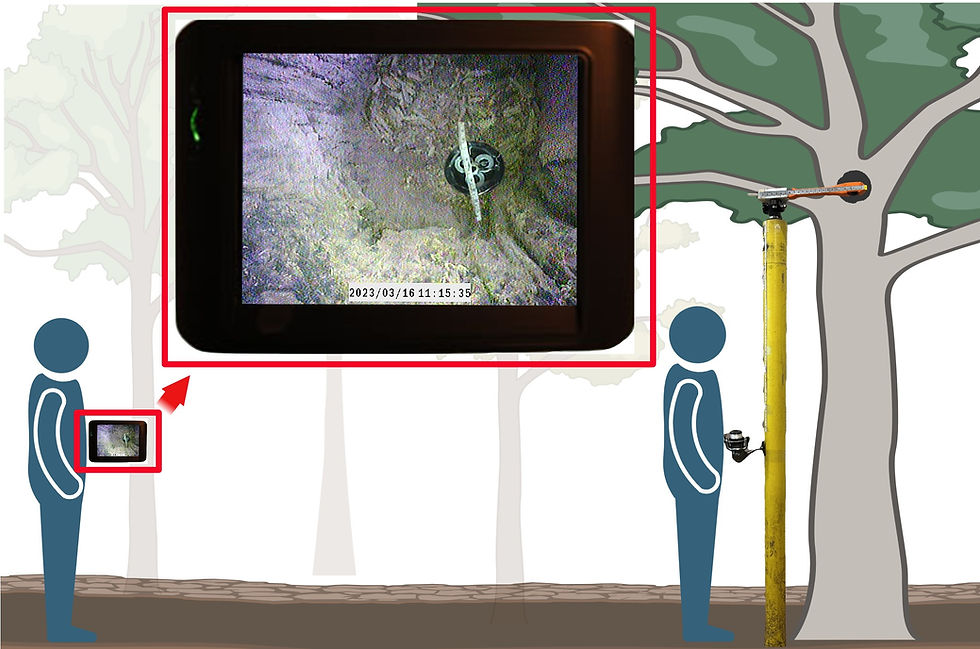Method for Evaluating and Measuring Cavity Suitability for Nesting Wood Ducks
Cindy L. Von Haugg
M.S. Student, Clemson University




The challenges associated with climbing trees to measure cavity dimensions have limited the accumulation of knowledge regarding wood duck (Aix sponsa) nesting habitat and ecology. To overcome this issue, we developed a 2-person method to measure external and internal tree-cavity dimensions from the ground. Our approach uses a telescopic pole, wireless cavity inspection camera with a monitor, and reference scale, allowing an object of known length to be viewed and recorded inside the cavity. We tested our method using simulated cavities (n = 20), assessed accuracy by comparing the estimated and actual measurements, and evaluated precision between 2 observers. The average difference (±1 SE) between estimated and actual measurements (n = 40) for entrance width (0.9 ± 0.9 cm), entrance height (0.8 ± 1.1 cm), platform width (0.1 ± 3.7 cm), and platform length (1.0 ± 3.2 cm) were ≤1 cm. There was no significant difference between observer measurements for entrance width, entrance height, platform width, or platform length. Observers overestimated cavity depth by an average of 0.1 ± 1.6 cm and there was a significant difference (1.3 ± 2.2 cm) between observers for mean cavity depth. We applied the technique to naturally occurring cavities. The time to complete a natural-cavity survey in the field (n = 37) averaged 12.2 ± 6.9 min. Our method increases the practicality, accessibility, and safety of researchers conducting cavity surveys for wood ducks and other cavity-dependent wildlife using a cost-effective, cavity-measuring tool.